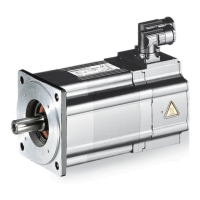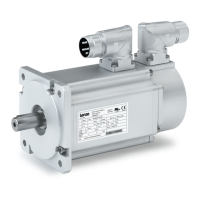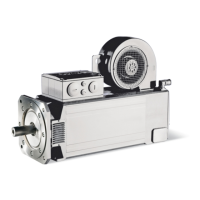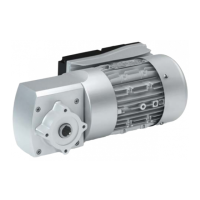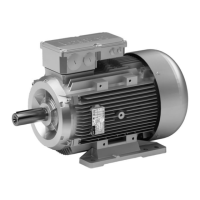Mechanical installation
Holding brake (option)
Spring-applied holding brakes
5
26
Lenze • BA 33.0006 • 5.1
5.4.2 Spring-applied holding brakes
These brakes are used as holding brakes and serve to hold the axes without backlash at
standstill or in the deenergised state.
For permissible operating speeds and characteristics, please see the motor catalogue
applicable in each case. Emergency stops at higher speeds are possible, but high
switching energy increases wear on the friction surfaces and the hub.
Stop!
The friction surfaces must always be free from oil and grease because
even small amounts of grease or oil will considerably reduce the braking
torque.
The formula below provides a simplified way to calculate friction energy per switching
cycle which must not exceed the limit value for emergency stops that depends on the
operating frequency (motor catalogue; Lenze drive solutions: formulas,
dimensioning, and tables).
Q = ½ ⋅ J
tot
⋅ Δω
2
⋅
M
K
M
K
− M
L
Q[J] Friction energy
J
tot
[kgm
2
] Total mass inertia (motor + load)
[
1
/
s
] Angular velocity =2
n
/
60
, n= speed [rpm]
M
K
[Nm] Characteristic torque
M
L
[Nm] Load torque
Depending on the operating conditions and possible heat dissipation, surface
temperatures can be up to 130 °C.
More detailed information on the used brakes is provided in the
corresponding catalogues.
Wear on spring-applied brakes
Spring-applied brakes are wear-resistant and designed for long maintenance intervals,
23).
However,thefrictionlining,theteeth between the brake rotor and the hub,andalsothe
braking m echanism are naturally subject to function-related wear which depends on
the application case (see table). In order to ensure safe and problem-free operation, the
brake must therefore be checked and maintained regularly and, if necessary, replaced
(see brake maintenance and inspection).
The following table describes the different causes of wear and their effect on the
components of the spring-applied brake. In order to calculate the useful life of the rotor
and brake and determine the maintenance intervals to be prescribed, the relevant
influencing factors must be quantified. The most important factors are the applied
friction energy, the starting speed of braking and the switching frequency. If several of
the indicated causes of wear on the friction lining occur in an application, their effects
are to be added together.
